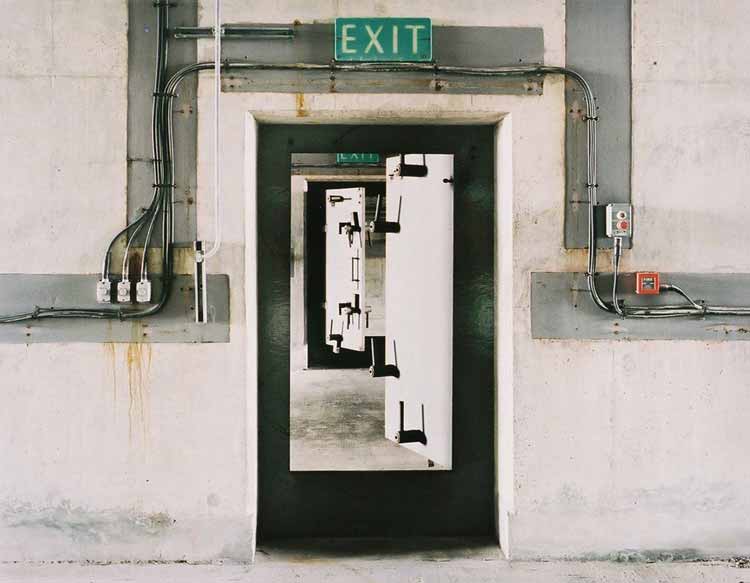A participatory exploration: understanding the relationship between democracy and photography
Images of democracy in process – for example of politicians at work, or protestors in a city square – have the ability to heighten our awareness and appreciation of the democratic process and to encourage participation. Here, John Kippin explores the interesting and complicated relationship between the two for Democratic Audit.

Copyright: John Kippin
When announcing the concept of photography for the masses, George Eastman, the founder of the Eastman Corporation and the ‘Kodak’ camera, may have had an inkling of what photography might become in the future. The idea of uncoupling the origination of the photograph to its subsequent processing was certainly viewed as revolutionary back in the late C19th and produced a new generation of photographers free to explore the art of picture making but without the unnecessary encumbrance of spending many hours in dark rooms and processing laboratories.
It would have been far more difficult to predict the development of a kind of photography that used computers to shuttle numbers in ever-increasing quantities into pictoral – algorythms, with the ability to appear anywhere instantaneously and to define and re-define the many ways in which we engage with the contemporary world bringing the total domination of virtual and broadcast space and its penetration into our very understanding of what constitutes reality. To refer to simply as ‘digital’ seems to underestimate its potential and its impact on all of our lives.
The result of this technological shift means that we are all photographers now and have become accustomed to apprehending images-regardless or not whether we actually produce any ourselves. The personal production of images continues to be perceived as overwhelmingly positive and largely celebratory in nature and this activity has expanded exponentially to include new social dialogues and exchanges largely driven by a youthful generation finding new ways to define themselves and their communities, whilst happily and probably unknowingly, providing entertainment for the online communities and being groomed as future media consumers by atavistic business entrepreneurs.
One of the great contemporary photographers, William Eggleston, quintessentially American and arguably responsible for creating the archetypal modern photograph -the one that manages to use the camera as an extension of the eye and brain as a way to re-vision the world and to reflect and offer commentary on the modern world, describes his photography as being the product of the ‘democratic camera’, bringing together a range of subject material available to us all, and treated somehow democratically, at least in theory.
This device, the camera, which existed long before the process of photography was used most notably by the artists of the Renaissance as an instrument of perception and transcription, has been described most eloquently by the philosopher Vilem Flusser as ‘a black box’ endowed with infinite possible images, something that can be endowed as a means by which to challenge the post industrial world of technocratic determinism and to open up a space for the possibility of freedom. He argues that photography is the only form of revolution effectively available to us. In this, its essential function has not changed throughout history but has been transformed by the addition of the computer.
Revolution and Democracy are strange bedfellows and perhaps the ideas that appeal the most to our sensibilities are revolution through democracy. This combination then has the potential to inform and interrogate an idea of democracy of which now we speak, and it is surely the function of democracy to provide a positive methodology through which to engage the world, and to increase in about participation in making decisions with regard to all an increasing number the elements of our increasingly complex lives. With our western centred view of the world these issues come into focus in particular ways. We are used to thinking about photography as a medium to describe the world and as a medium of personal expression – a tool with which all of us can craft representations of reality without any prior knowledge of traditional photography or drawing.
Participation in Photography is understood by millions and refined by many. Contemporary photographic practice extends to all countries at varying levels and is responsible for generating billions of images – most of which never see the light of day, many others have a relatively brief excursion on the internet or lie in storage on a computer somewhere. Some even make into ‘hard copy’. It is these images that have endured the vicissitudes of the selection process and are enshrined through print.
At another level the photographs that we value the most become a part of the currency of fine art adopting many of its virtues and values and some of its problems. These are the images that we celebrate as significant, embrace as art, and embody the qualities that enrich our lives in some way through observation, description, commentary and beauty. Much has been written about democracy and its limitations. It is invariably viewed as a flawed, but nonetheless as the best of the available options by which to make decisions about the ways in which we run our lives. E. M. Forster expressed it as:
“two cheers for Democracy: one because it admits variety and two because it permits criticism. Two cheers are quite enough: there is no occasion to give three”
Within our own context, arguments will continue with regard to what constitutes an acceptable level of participation and intention regarding the application of the principals of democracy. On the one hand there is the involvement of large corporate interests in paying for it creating inevitable compromises, on the other the continuing struggles within and about the appropriate levels of participation within the Trade Unions or the protestations of abolitionists who seek election to the European Union in order to mis-represent. The ‘stitch – up’ is never far away! See – Crimea!) Like Western Capitalism, another of the great Western exports, it is a work in progress. It is, however a product that we strive to improve its relevance and efficacy and this is the essential point in originating a photography exhibition and competition with the central theme of ‘Democracy’ Simple really – all can enter, but only some will be chosen!
E.M. Forster offers some encouragement in his essay ‘What I believe’ (1938) by observing that:
The people I admire most are those who are sensitive and want to create something or discover something, and do not see life in terms of power, and such people get more of a chance under a democracy than elsewhere. They found religions, great or small, or they produce literature and art, or they do disinterested scientific research, or they may be what is called ‘ordinary people’, who are creative in their private lives, bring up their children decently, for instance, or help their neighbours. All these people need to express themselves; they cannot do so unless society allows them liberty to do so, and the society which allows them most liberty, is a democracy.
Three cheers for such sentiments, well expressed – but how is it possible to make images that reflect the philosophy that is democracy? Is it perhaps better represented as a process, rather than as a product? It is certainly more available to be photographed as something ‘in progress’. It is something for all of those sufficiently interested to enter and contribute to an essential debate and reflection on what is truly a great ‘work in progress’.
—
Note: This article gives the views of the authors, and not the position of Democratic Audit UK, nor of the London School of Economics. Please read our comments policy before commenting.
—
 John Kippin is Emeritus Professor of Photography at the University of Sunderland
John Kippin is Emeritus Professor of Photography at the University of Sunderland





 Democratic Audit's core funding is provided by the Joseph Rowntree Charitable Trust. Additional funding is provided by the London School of Economics.
Democratic Audit's core funding is provided by the Joseph Rowntree Charitable Trust. Additional funding is provided by the London School of Economics.
A participatory exploration: understanding the relationship between #democracy and photography https://t.co/Z7blpexPWz @democraticaudit
on the ‘relationship between democracy & #photography’ by Prof John Kippin of @sunderlanduni via @ democraticaudit https://t.co/gdxI32NU4g
A participatory exploration: understanding the relationship between democracy and #photography https://t.co/i6SV2KDNzq via @democraticaudit
A participatory exploration: understanding the relationship between democracy and photography by Prof John Kippin https://t.co/j0mILplDHH
A participatory exploration: understanding the relationship between democracy and photography https://t.co/18Y3SW7JU6
A participatory exploration: understanding the relationship between democracy and photography https://t.co/SZmKUn57Rr